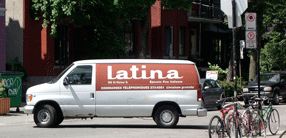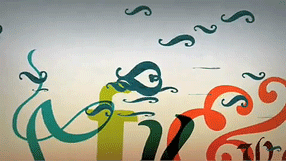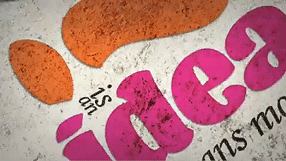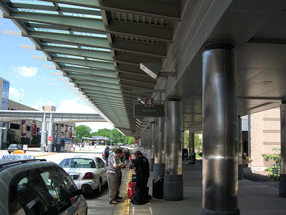Since Thursday, I’ve been at TypeCon Rhythm in Atlanta. It’s a far cry from that first TypeCon, in a motel near an office park in Westborough, Massachusetts. Although this year’s TypeCon is noticeably smaller than in recent years (everyone’s feeling the economic pinch), it’s been lively. And the weather hasn’t been as brutal as you might expect in Georgia in July.
The program has been varied and mostly engaging. Gerard Unger was here to receive the 2009 SOTA Typography Award – richly deserved, and greeted with a standing ovation. As always, he has been friendly and approachable. I missed the Type Crit, when he, Matthew Carter, Akira Kobayashi, and John Downer offered their critiques and commentary on typeface designs that were submitted to them, but it’s always a high point, even for those who aren’t type designers. Bruno Maag did a heartfelt rant on the importance of non-Latin type design (and the wide-open markets for new non-Latin typefaces). Shelley Gruendler told the story of Type Camp, the hands-on learning experience that she started in frustration at the teaching of type in Vancouver and that she is now taking around the world. Rick Anwyl gave a somewhat scattershot but moving account of the origins and the saving of the CBS typographic wall, the “gastrotypographicalassemblage” created by Lou Dorfsman and Herb Lubalin, which once graced the wall of the employee cafeteria at CBS headquarters in New York and is now being slowly restored at Atlanta’s Center for Design Study. Zeena Feldman spoke provocatively about the idea of how visual design contributes to the sense of a globalized “non-place” wherever you go. Heather Shaw gave an intriguing account of how she had taught web typography by having students figure out how to reproduce classic layouts of the New Typography using HTML and CSS, thus connecting contemporary technology with the revolutionary typography of eighty years ago.
It goes on tomorrow, kicking off with a two-hour panel on the hot topic of web fonts – how you can give web designers a way to use real typefaces without either turning them into graphic images or giving away digital fonts to everyone who views a web page.
TypeCon is one of the two major typographic events of the year (the other being ATypI). Both of them share at least one characteristic: no matter how stimulating the program may be, the heart of it all is the social and personal interactions, among old friends, current colleagues, and new acquaintances – who may in turn become old friends in future years. And sometimes you go off on a tangent: on Friday night, I ended up accompanying Paul Shaw and Frank Wildenberg to an Atlanta Braves baseball game (my first live baseball game in thirty years). It was a way to get a little sense of Atlanta beyond the vicinity of the conference hotel. (And, as it turned out, to see some fireworks.)
Next year’s TypeCon will be in Los Angeles. It’ll be worth being there.
[Photos: Hatch Show Print posters after Jim Sherradan’s keynote talk; opening slide at the presentation of the SOTA Typography Award to Gerard Unger; and two sculptures by June Corley made out of physical letters, from a gallery exhibit at the Grand Hyatt. More photographs here.]
Categorized as events, type designers |





